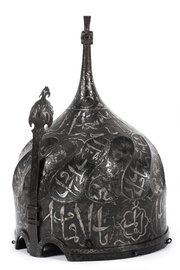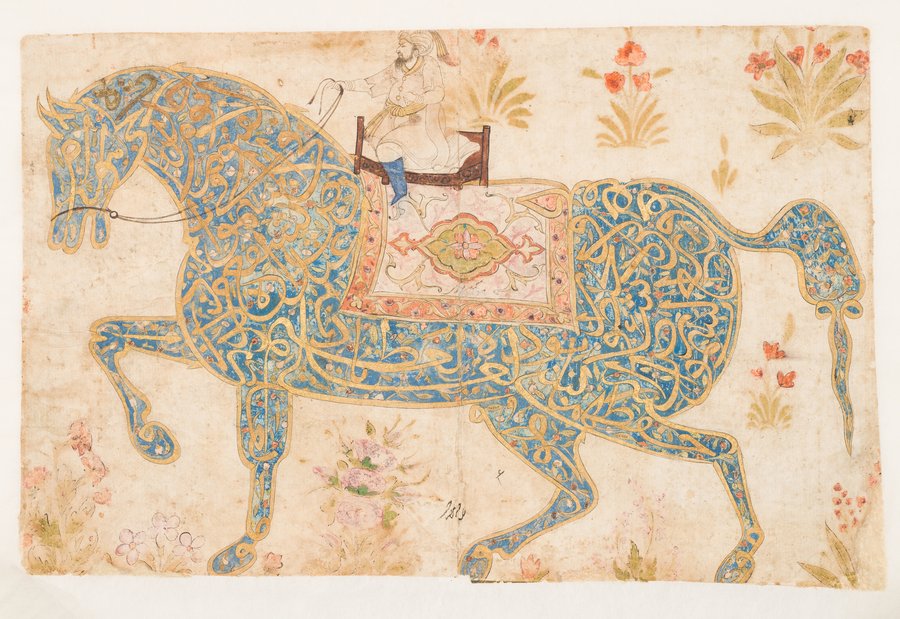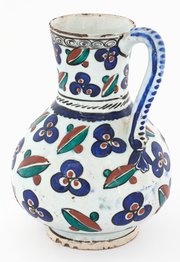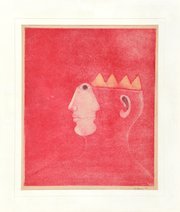
Calligraphic horse with the Throne Verse
Museum of Islamic Art
- Title:
- Calligraphic horse with the Throne Verse
- Production place:
- Bijapur
- Date:
- 1690 - 1710
- Period:
- Deccan Sultanates
- Title:
- Calligraphic horse with the Throne Verse
- Production place:
- Bijapur
- Date:
- 1690 - 1710
- Period:
- Deccan Sultanates
- Material:
- Paper, Gouache, Gold
- Technique:
- Illustration, Illumination, Calligraphy
- Dimensions:
- 26.2 × 17.1 cm
Among the many Qur'anic passages employed to decorate architecture and objects of daily used of much smaller scale across the Islamic world up to the present days, the Throne Verse (Ayat al-Kursi, Sura al-Baqara, verse 255) holds a very special place, being often memorised and recited by Muslims. The Throne Verse declares the incomparable, unmatching power of God, it is reputed to be particularly powerful and auspicious, hence it is often recited aloud to ward off evil or displayed on a variety of objects. In this folio, the master calligrapher and illuminator has turned the verse into the shape of a horse, quite a rare choice even within the field of zoomorphic calligraphy. In fact, Arabic zoomorphic calligraphy shows a predilection for bird- and lion-shaped compositions, allusions respectively to the paradise and God (and references to Qur'anic passages), and, in certain contexts, to 'Ali. According to modern scholars, the choice to depicts a horse might refer to the content of the Throne Verse, with the rather small rider representing the human soul. Some compositional incongruities between the horse and its rider suggest that the latter was perhaps added at some point after the completion of the calligraphic horse. The folio bears two inscriptions in black ink, partly smudged and illegible, that might have been added at a second stage. Beautifully penned in gold ink, the text (from which a couple of words are missing) starts from the head of the horse and runs diagonally to its tail outlining the profile of the horse figure and filling its body.



